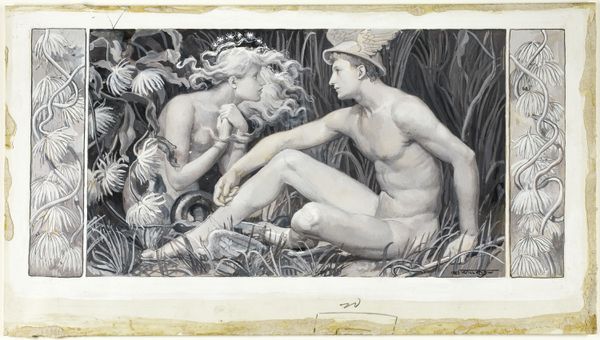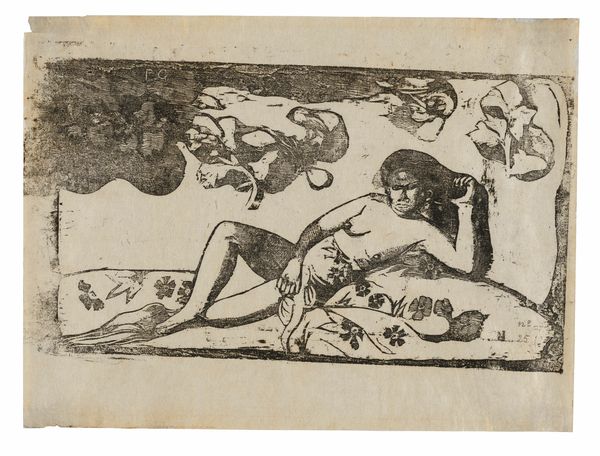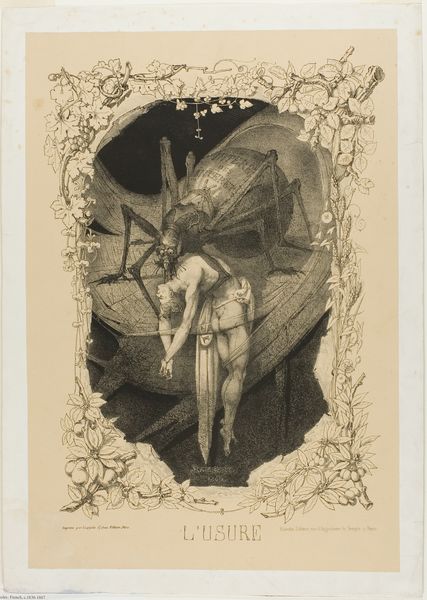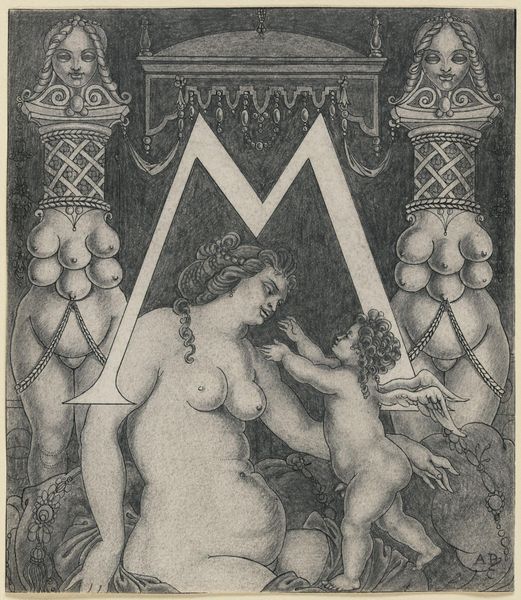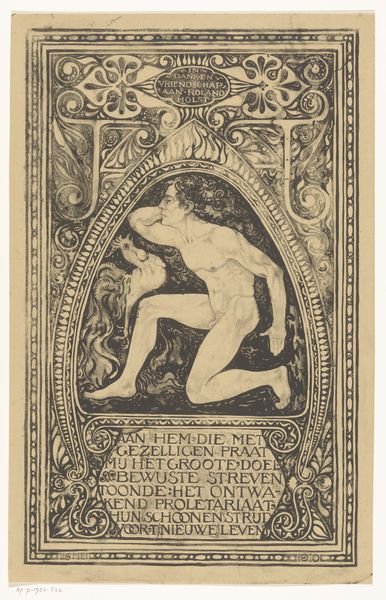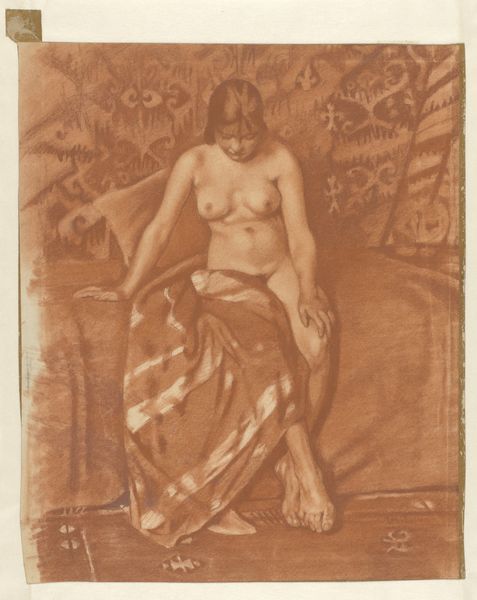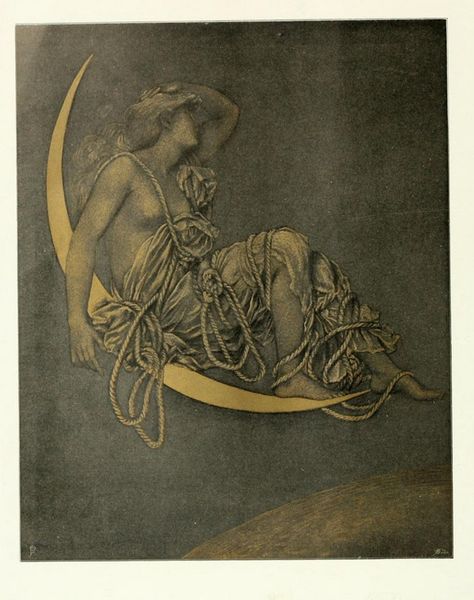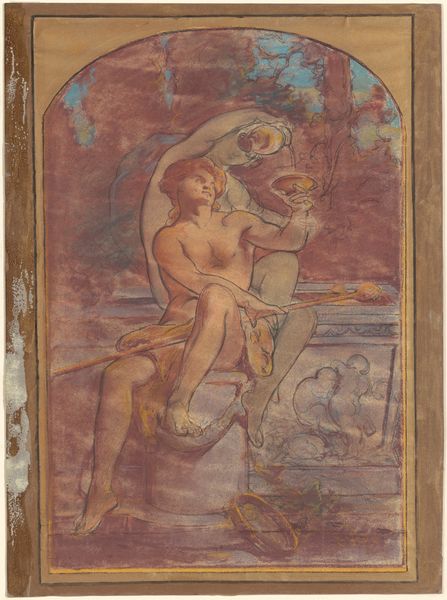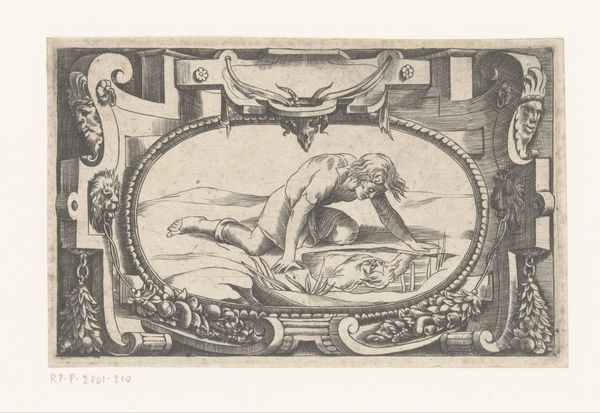
drawing, print, gouache, paper, ink, pencil, charcoal
#
portrait
#
drawing
# print
#
gouache
#
landscape
#
paper
#
ink
#
plant
#
pencil
#
symbolism
#
charcoal
Dimensions: 226 × 359 mm
Copyright: Public Domain
Editor: So, here we have "Tail-Piece - The History of the Book" by Will Hicock Low, dating back to around 1888. It's a combination of drawing and print on paper, with gouache, ink, pencil, and charcoal. The figure playing a flute surrounded by all this text feels so dreamlike, but also very deliberate. How do you interpret this work? Curator: Dreamlike indeed! It whispers of artistry, doesn’t it? Like a half-remembered melody. What strikes me most is how Low weaves together text and image, not as separate entities but as partners in a dance. The figure, so serene playing that flute, emerges organically from a field of text, a history of its own creation. Consider that the “Forbes Company, Boston,” mentioned so prominently, reproduced this work. We’re seeing a conversation between fine art and the burgeoning print industry of the late 19th century. It’s as if the act of reading is made visible, embodied, set to music. What do you think it means to place a nude figure here among the text? Editor: Maybe it's stripping away the layers to show the raw, creative process? Highlighting the human element behind the printed word? It makes it feel less like a mass-produced object and more like an intimate act. Curator: Precisely! It is sensuality meeting intellect. Does seeing all these influences—Keats' poem, the printing press, the artist’s hand—change your initial read of it? Editor: Absolutely. It adds so many layers of complexity. I came in thinking it was a purely aesthetic piece, but it’s clearly a statement about art, commerce, and the very act of creation. Curator: And isn’t it delightful to realize how wrong you can be… in the best possible way?
Comments
No comments
Be the first to comment and join the conversation on the ultimate creative platform.

